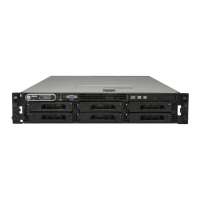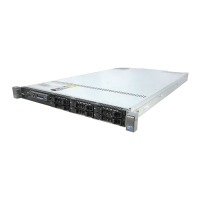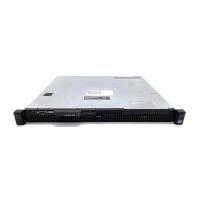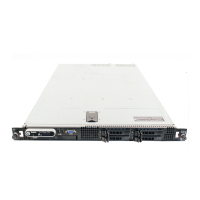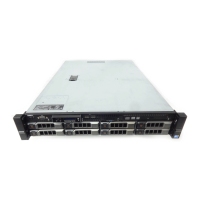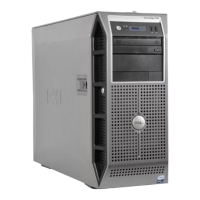5-2 Dell PowerEdge 4300 Systems Installation and Troubleshooting Guide
diskette drive) are working, you can use the Dell Diagnostics. If you know what com-
ponent(s) you need to test, simply select the appropriate diagnostic test group(s) or
subtest(s). If you are unsure about the scope of the problem, read the rest of this
chapter.
6WDUWLQJWKH'HOO'LDJQRVWLFV
You can run the Dell Diagnostics from either the utility partition on your hard-disk drive
or from a diskette that you create from the
Dell Server Assistant
CD.
To run the diagnostics from the utility partition, follow these steps:
1. Start the utility partition by pressing <F10> during the power-on self-test (POST).
2. From the utility partition’s main menu, select the Run System Diagnostics option
from Run System Utilities.
See “Utility Partition” in Chapter 2 of the
Dell PowerEdge 4300 Systems User’s Guide
for additional information about the utility partition.
To run the Dell Diagnostics from a diskette, follow these steps:
1. Create a diagnostics diskette using the
Dell Server Assistant
CD.
See “Create Diskettes” in Chapter 2 of the
User’s Guide
for instructions on
selecting the appropriate Dell Server Assistant option to create this diskette.
2. Boot the system from the diagnostics diskette.
If the system fails to boot, see Chapter 11, “Getting Help,” for instructions on
obtaining technical assistance.
NOTE: Before you read the rest of this chapter, you may want to start the Dell Diag-
nostics so you can see it on the screen of the monitor.
When you start the diagnostics, the Dell logo screen appears, followed by a message
telling you that the diagnostics is loading. Before the diagnostics loads into memory, a
program tests the random-access memory (RAM) that will be used by the
diagnostics.
If no errors are found in RAM, the diagnostics loads, and the DIAGNOSTICS menu
appears (see Figure 5-1). The menu allows you to run all or specific diagnostic tests or
to exit the Dell Diagnostics.
For a quick check of the system, select RUn Quick Tests. This option runs only the
subtests that do not require user interaction and that do not take a long time to run.
Dell recommends that you choose this option first to increase the odds of tracing the
source of the problem quickly. For a complete check of the system, select Run All
Tests. To check a particular area of the system, select RuN Specific Tests.
To select an option from the DIAGNOSTICS menu, highlight the option and press
<Enter>, or press the key that corresponds to the highlighted letter in the option you
choose.

